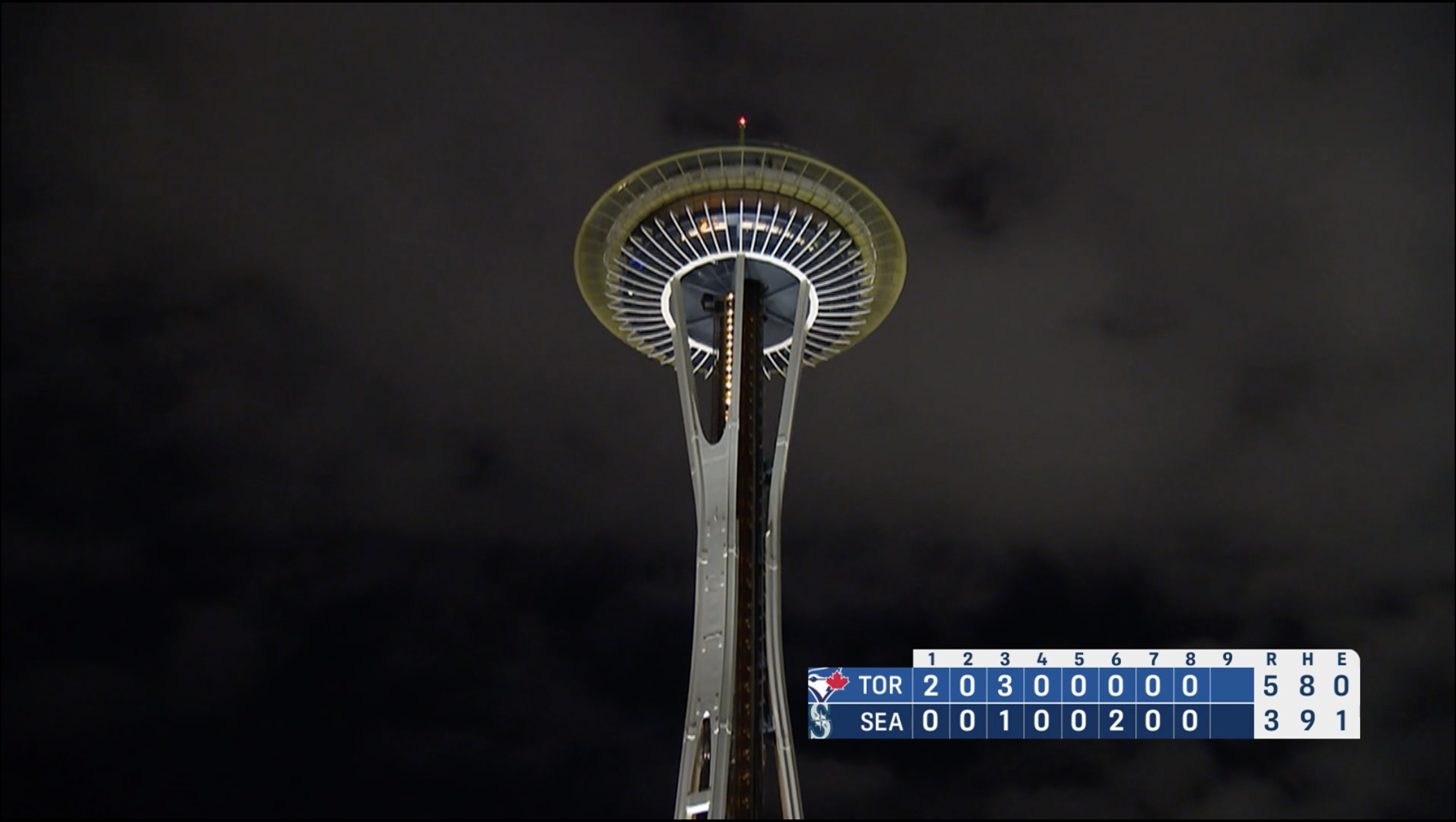
Screenshot taken from a broadcast of a game between the Toronto Blue Jays, and the Seattle Mariners. The graphic in the corner is called a "line score" and is used to show how many runs were scored in each half-inning, along with the total runs, hits, and errors accumulated by each team. Here, we can see that the Blue Jays are leading the Mariners as the games goes into the top of the 9th inning.
Innings, Explained
A game of baseball is divided into nine sets of offense/defense rotations, known as innings, with each individual offense vs. defense matchup being known as a half-inning. Whichever team has the most runs at the end of nine innings is the winner, unless there is a tie, in which case the teams will tack on additional innings until a winner can be declared. The innings are ordered such that the home team (usually the team playing in their home stadium) plays defense first, and bats second. Each game goes for exactly nine full innings, unless:
- the home team has the lead at the start of the bottom of the ninth; in such a circumstance, they don’t need to score any more runs, and thus the game ends after eight and a half innings of play
- the game is tied at the end of nine full innings; in this case, the game will continue with a tenth full inning of play, and if the score is still tied at the end of that inning, yet another inning will be added, until a winner can be declared. Durning the regular season, extra-innings are played under slightly different rules.
Due to inclement weather, or other unforeseen circumstances, a game may be temporarily delayed (“suspended”) once it has begun. The best case scenario when this happens is that whatever is causing the suspension is only temporary— a passing rain storm, for example— and the game can resume some number of hours after it began. If, however, a suspended game cannot be completed on the same day, Major League Baseball will generally attempt to resume the game at a later date, in which case it will be played to its full completion. A game that is completely stopped can still be considered official if it has gone at least five innings— or four and a half innings with the home team in the lead at the time the game is stopped. If a game is completely stopped before it becomes official, it is generally said to have not happened, and any statistics compiled during the game are voided. As such, Major League Baseball generally tries to fully complete all suspended games, rather than abandoning them entirely1. However, you will occasionally see games be called before they are fully-completed; as long as the game is official, it will still count even if it only went six or seven innings, rather than the full nine.